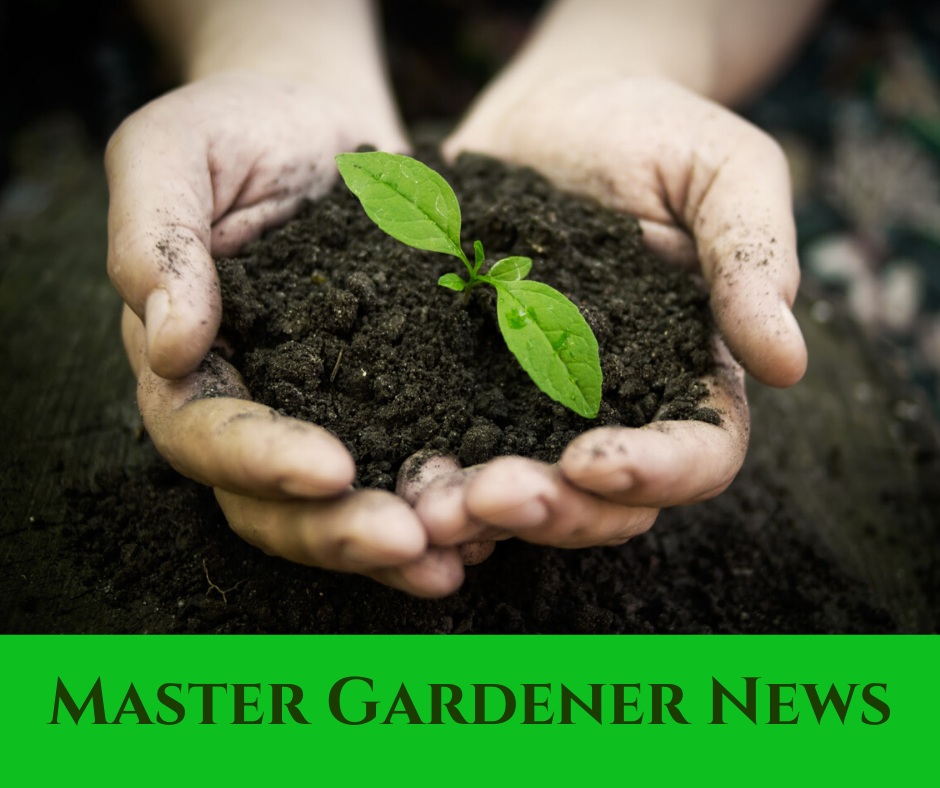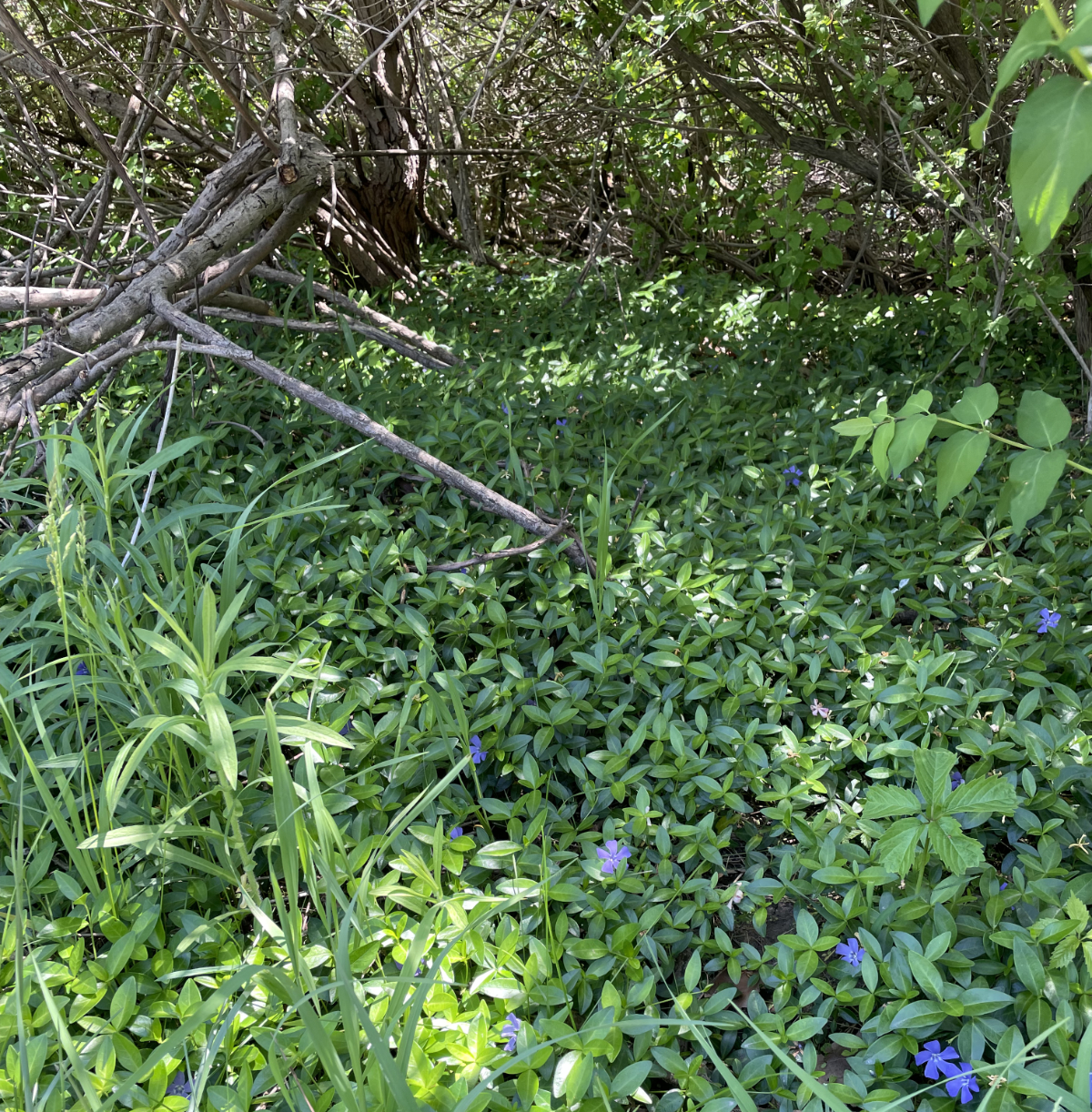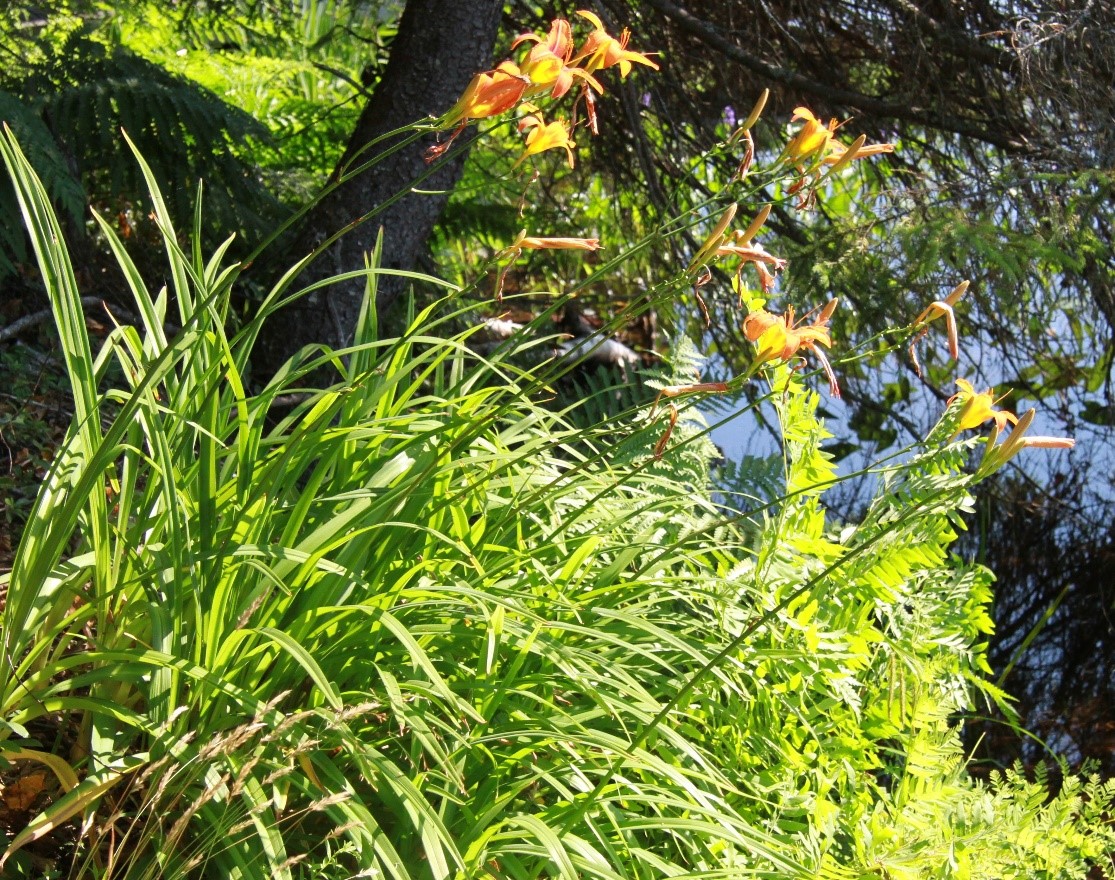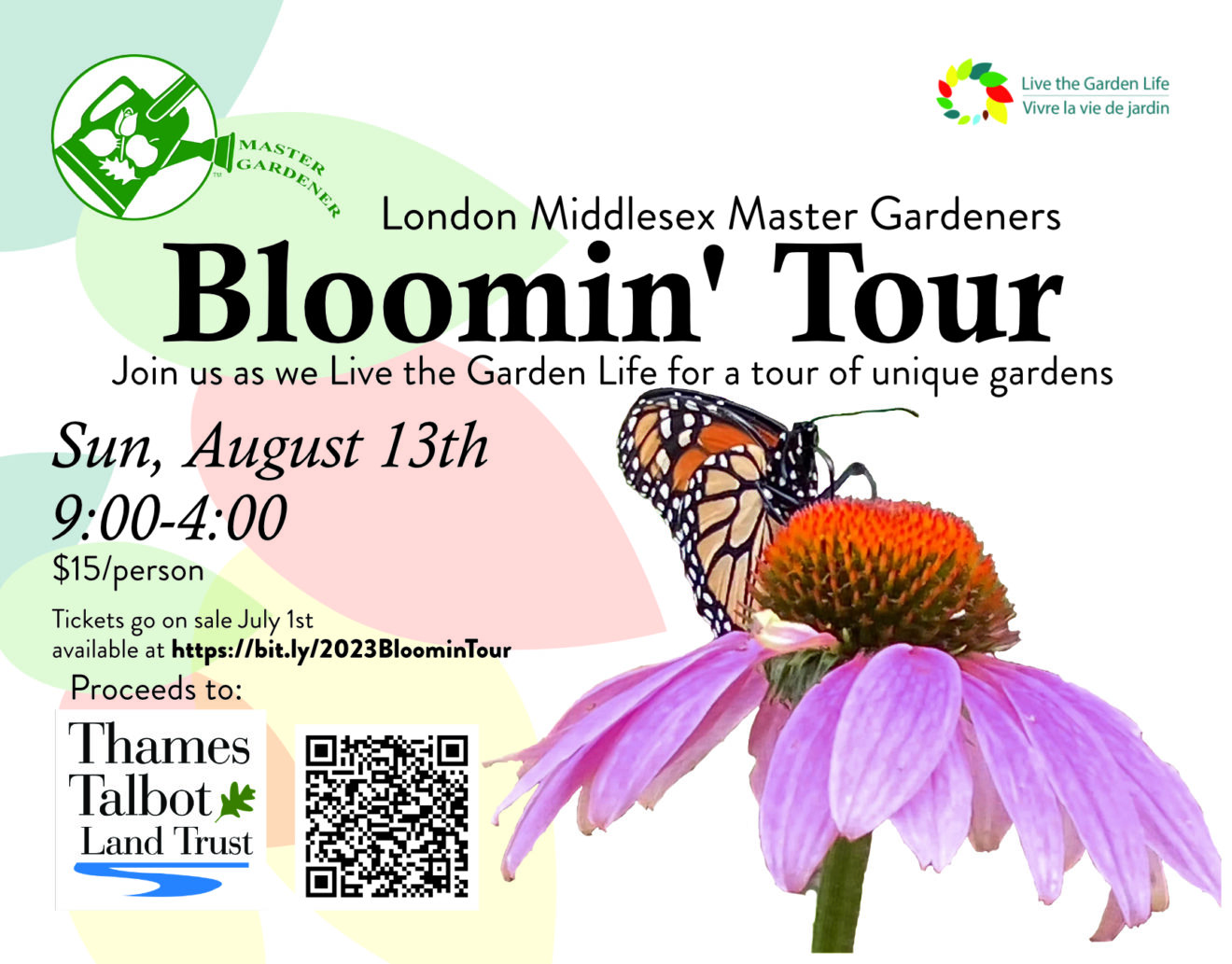|
|

|
In this issue: invasive species and what to replace them with
|
|
|
|
|
|
|
|
|
How did your garden do over the Winter?
With spring in full swing, we are happy to see many of our favourite plants sprout again this spring. However, sometimes something just doesn't seem to have come through the winter the way you think it should have. Before you yank it out thinking there is no hope, have a closer look. Don't be impatient and pull a poor plant just as it is waking up.
|
Luckily there is an easy way to tell if something is dead or just slow growing
If it is a woody plant, do a scratch test. Gently scratch the tender bark on a small branch or stalk. Is it green/yellow-green and moist or is it brown and dry? Green is good, brown is bad. If there is green, have some patience, there is still life in the plant. If you find brown, you're likely out of luck ... but try a few places just to be sure before yanking.
|
If it is a herbaceous perennial, gently dig around the roots. It they are still firm and have lots of little hair roots have patience. If the roots are dry, mushy or non existent, it's time to say good bye. Some plants like perennial Hibiscus are really slow to grow in the spring. Even now, this late in the spring and with all the heat we've had, they are just putting up new shoots for the year. There is nothing like giving it a tug only to see the beautiful healthy roots waving in the wind.
|
|
Before you pull the deceased plant have a good look at it. Try to figure out why it died. Use it as a learning experience. Is there an insect you can see? Are the conditions too wet or too dry? Too sunny, too shady? Was the weather too cold, too hot or too windy? There is no point spending more money on replacing a plant if it is in the wrong location only to watch it die again.
|
|
|
|
|
|
Summer is just around the corner!
The grass is green, the trees are lush with leaves again, our garden beds have woken up and are filling in. The birds are laying eggs, the bees are busy buzzing and the days are long. Now is the time of year when we take stock of what we might want to change in our landscapes. Last issue we talked about the importance of adding Keystone Native Plants (here's the link in case you missed it). In this issue we are looking at what an invasive plant species is and why you should think about taking them out of your landscape.
|
How do we classify an Invasive Species
The Canadian Council on Invasive Species defines an invasive species as an "introduced species whose introduction or spread negatively impacts the environment, economy, and/or society including human health."
|
There is a major difference between an invasive species and an aggressive species. An invasive species chokes out other species doing harm to the environment. Aggressive species are prolific growers but do not choke out other plants. They can be very annoying but do not do the same environmental damage.
|
How did they get here
|
Many (most) of our loved garden plants have been introduced to our area by gardeners of the past. They were brought here because they had some cultural significance, had a unique feature or function, or, just because they were pretty. Think about the common Dandelion (Taraxacum officinale). It's everywhere! The Dandelion was introduced to North America by the first colonizers as a coffee replacement and are actually full of vitamins. Unbelievably, many of the very worst offenders are still widely available at many nurseries and big box stores. Educating yourself on what plants are classified as invasive is your best defence against spread.
|
|

|
|
|
|
Photo taken of a large "wild" area just beside the sidewalk within the city of London, over run with periwinkle, garlic mustard, honey suckle and buckthorn.
|
|
Most important: Why should we care
Since many of the introduced plants came from similar growing conditions, once here they thrive. Some are content to stay where we put them quietly for years, but some are over achievers. These plants have escaped our cultivated gardens (or carelessly disposed of) into the wild where they out compete the native species. Some will say "I live well within the city, what I plant doesn't matter." but most birds that have eaten the seeds from some of these plants don't turn around at the city limits. They fly and do their business pooping the seeds along the way.
|
This is not an issue just for those living in the country.
|
This is an issue for all of us. Even our wild spaces within the city limits need protecting. When the native species are choked out the creatures that depend on those plants have no food and no shelter. So where do the go? Somewhere else if they can find the habitat. Often the species will just die out. Once an invasive species gets into an area it is very difficult to remove. Municipalities are forced to dedicate large amount of resources in an effort to try to control the spread. If the spread is on private property, it is up to the land owner to spend the thousands of dollars to clean things up.
|
Most, most important: What to do with THOSE plants
Now that you have decided to remove the offending invasive species from your property, what do you do with it? DO NOT toss it out somewhere in the country, along a ditch, or in the corner of some farmers field. This is partly how we go into this mess in the first place.
|
Depending on the plant and how it spreads, even putting it into a municipal compost program can cause further spread. If the composting system does not get hot enough to kill the plant, the poor person that uses the compost unknowingly could be introducing that nasty invader into their yard. Disposal in the garbage can also cause issues. Really the best answer to make sure it is good and dead before it leaves your property. You can do this by leaving it in the baking sun for a while. Better yet, put it in a black garbage bag in the baking sun. The extra heat speeds up the process. Only once it is really dead can you clear your conscience and dispose of the offender.
|
|
The first step is deciding to remove the offenders from your landscape, but what do you replace them with? There are some great alternatives out there that have the same presence or show as what you are taking out. Did you know that Blueberry shrubs have vibrant red foliage in the fall? Even without the option of fruit, they make a good alternative to a Burning Bush. Check out the Grow Me Instead brochure from the Ontario Invasive Species Council for some surprising suggestions.
|
|
|
|
|
|
They're not invasive plants in MY garden - What’s the Harm?
|

|
The Concepts and Controversies of Introduced Species / Invasive Plants
It is the policy of Master Gardeners of Ontario to encourage the removal of invasive species and to suggest planting alternatives for known invasives. While few will dispute the need to remove plants like dog-strangling vine, common buckthorn, phragmites, or garlic mustard, some balk at suggestions that favourites like Norway …
|
|
|
|
Where to go for more information?
|
There are many outstanding websites out there that are chocked full of great information to help us make informed decisions about our landscapes. Here is a collection of a few for a deeper dive.
|
|
EDDmaps - for identifying and tracking
|
|
NANPS - identifying and what to do
|
|
CIPR - stopping the sale of invasive species
|
|
extension.unh.edu - manual control methods (also has some chemical options not available here)
|
|
|
|

|
|
|
Nancy’s Rhubarb Cordial
|
This rhubarb cordial is very refreshing or delicious after a hot day working in the garden. Take 1 part of my rhubarb cordial mixed with 3 parts sparkling water or club soda is a wonderful way to relax or to share with friends. For an extra special cocktail, use sparkling wine or champagne instead of water or soda. Delish!!
|
|
|
|
In a large stainless steel saucepan, combine
|
- 5 c fresh red rhubarb, chopped into 1” or 2.5cm pieces
- 3 c water or enough water that just covers the rhubarb
- 2 tsp finely grated lemon
- Boil on medium high heat for about 15 min, stirring occasionally to prevent sticking.
- Remove from heat and cool slightly. Strain through cheesecloth.
- 1/4c bottled lemon juice and
- 1 c of white sugar
- Stir to dissolve the sugar and carefully pour into a clean bottle. Cap the bottle.
|
Store in the refrigerator for up to about 3 weeks.
|
|
Yields about 3 or 4 cups.
|
|
|
|
|
|
Community Connections - Want more? Check these out
|
|
|
Gathering on The Green
London Horticultural Society
|
June 3rd, 2023 at 10:00 am - 5:00 pm
|
Annual plant sale in Wortley Village
|
Annual Garden Emporium
St. Thomas & District Horticulture Society
|
June 4th, 2023 at 11:00 am - 3:00 pm
|
CSAO Station, 740 Talbot Street Rain or Shine event
|
Celebrate Nature
with the Middlesex Pollinator Team and Ethan's Garden
|
June 17th from 10:00 am-4:00 pm
|
|
Join them for a family fun day of workshops, expert speakers, native plant sales and giveaways.
|
Garden Party & Flower Show
Lambeth Horticulture Society
|
June 21st, 2023 at 1:00 pm - 6:00 pm
|
|
Lambeth United Church, 4268 Colonel Talbot Rd
|
Shaw Festival Garden Tour
|
June 24th, 2023 at 10:00 am - 4:00 pm
|
|
The 17th Annual Garden Tour will feature NINE fabulous private gardens in beautiful and historic Niagara-on-the-Lake.
|
|
|
|
|
|
We love to hear from gardeners and answer questions. Don't be shy.
We were all new to this once!
|
  
|
|
|
|
|
Want to Subscribe?
|
If this was forwarded to you, you may wish to subscribe to our next newsletter.
|
|
|
|
|
|
|
|
|
|
|